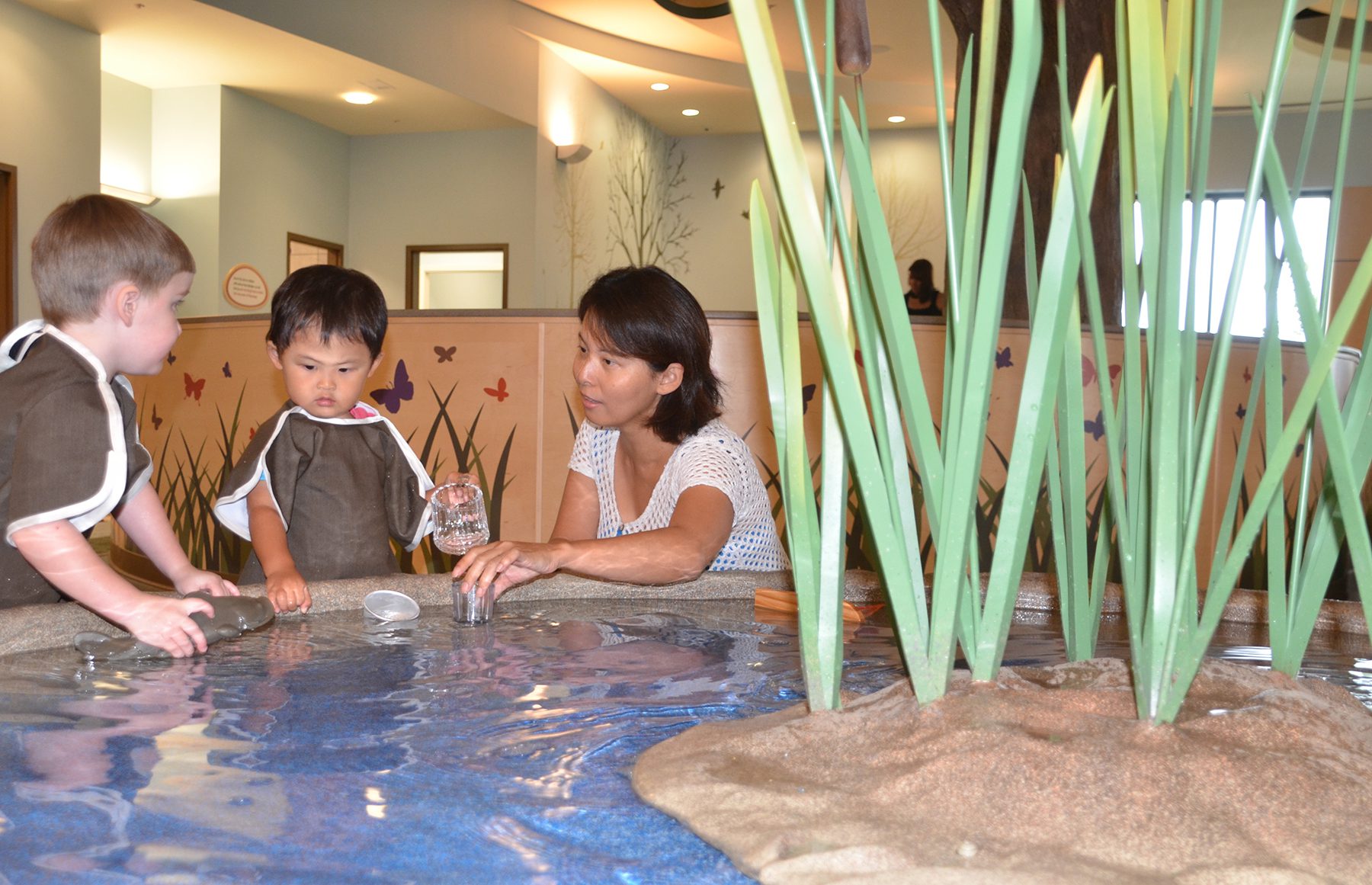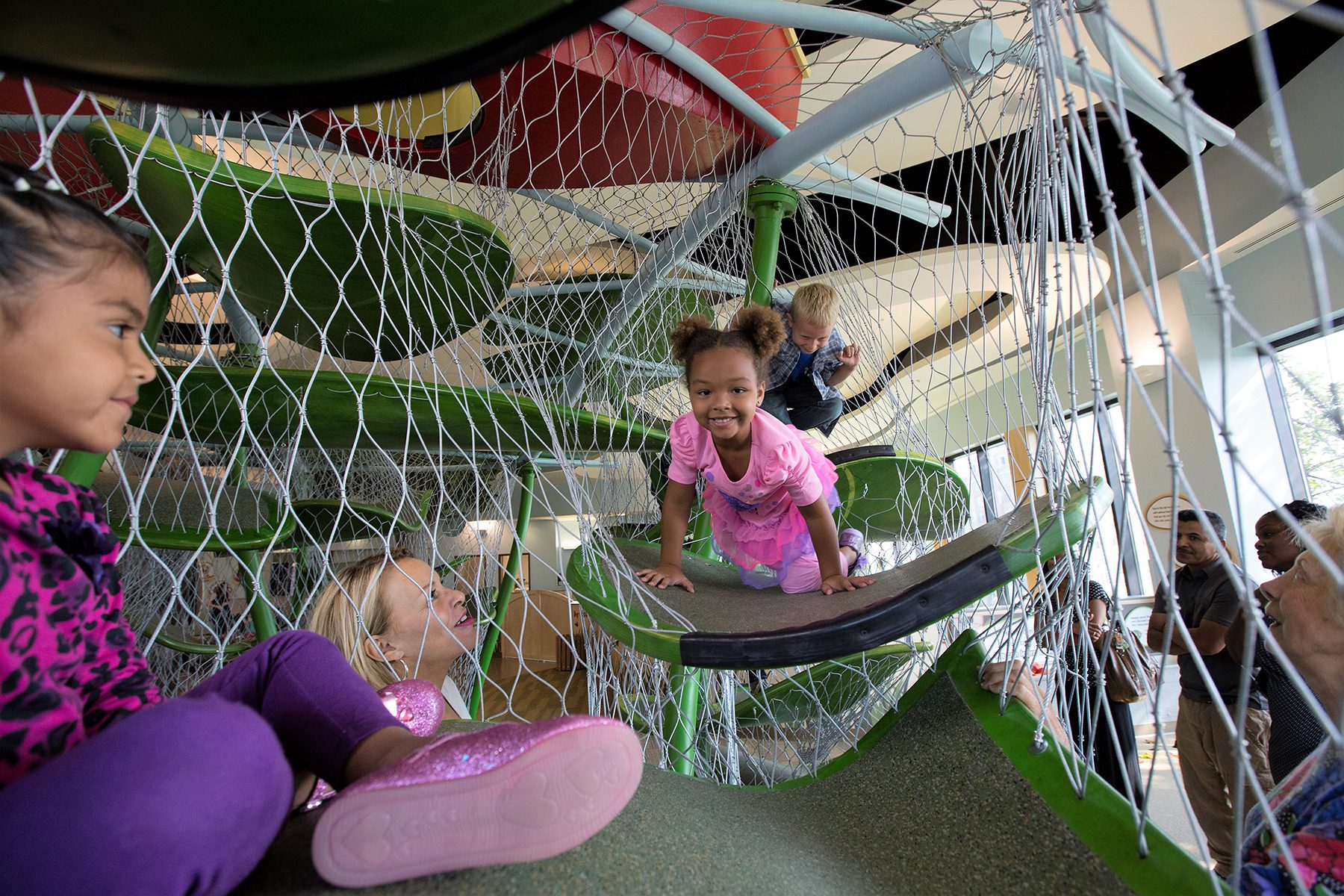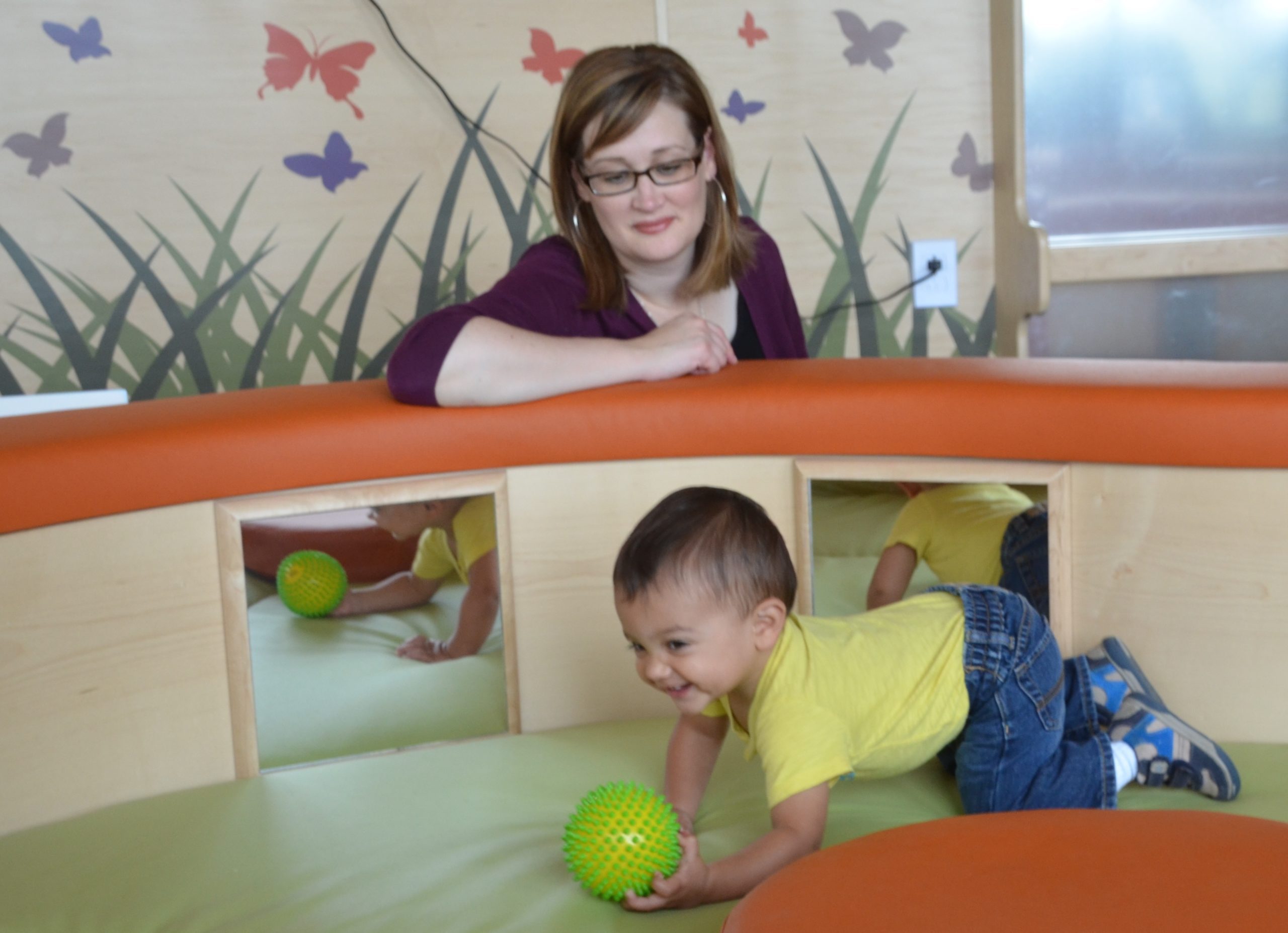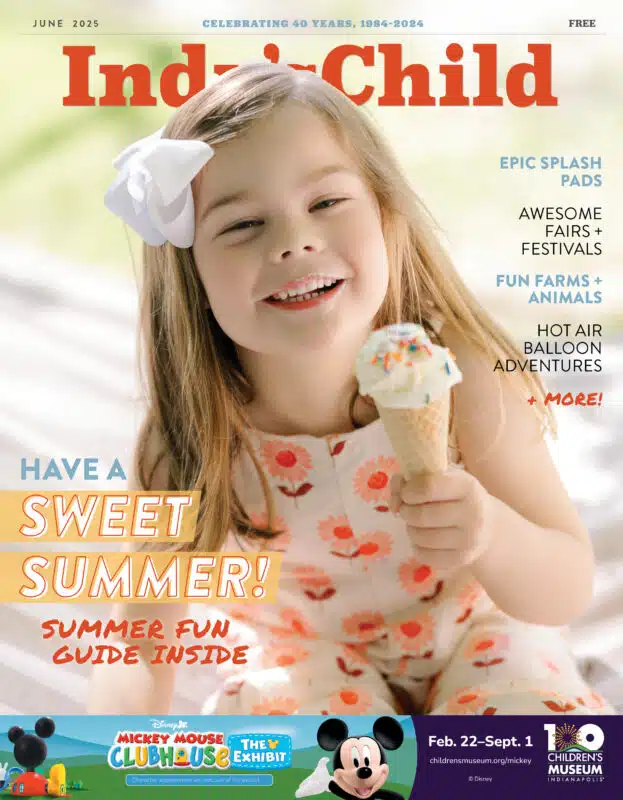Children are naturally curious and inquisitive. They want to explore their world and environments, and make discoveries. Educators say it is important for caregivers to promote and foster this from a young age so they continue to grow feeling confident and capable in their skills.
“I would encourage caregivers to really listen, watch, and engage with their child when playing,” says Elyse Handel, early childhood educator, The Children’s Museum of Indianapolis. “I know it sounds simple, but the more caregivers can understand their child’s interests, skills and where they are developmentally, they can then discern how to provide opportunities for support and further exploration.”

Handel says support those interests first and avoid putting unneeded pressure on little ones by pushing for more advanced concepts. She gives the example of when children are beginning to recognize and identify letters, try not to immediately teach them letter sounds the next day. Let them lead the way by practicing their skill in a variety of ways to feel successful. If they can identify letters on their favorite puzzle board, then introduce a “letter hunt.” Walk around the grocery store and look for those same letters another day. Or, you could read a book and encourage them to find those same letters. After they feel successful and conquered that skill; then, introduce that letter sound or try writing that letter.

Another important step in a child’s development is learning about various textures. Exploring different textures will further develop their inquiry-based learning skills. When children touch and feel different textures, they investigate materials, ask questions, and begin to make connections. As children get older and are able use oral language, they use new vocabulary to describe textures (like soft, smooth, fluffy, rough, bumpy, scratchy) and verbally express those connections, thoughts and ideas.
Playscape at The Children’s Museum is designed for little learners (birth to 5 years old). The art and music studios encourage children to create, using a variety of art materials and real musical instruments. Remember, the process of creating is more important than the final product.
The Reaction Contraption lets children and their grown-ups control balls traveling on a variety of tracks. In the process, little ones discover properties of motion and what causes balls to move slower or faster.
Water and sand tables introduce little tots to basic science concepts as they experiment by splashing, pouring and measuring. This type of play helps children learn to make decisions, solve problems and control parts of their environment. Little ones can also use rotating turntables to make patterns and designs in the sand to develop their artistic side.

Babyscape allows infants and toddlers ages two and younger to explore using their senses. They roll balls, turn on light switches, and look in mirrors. Kids can even explore cause and effect with the Push and Woosh and Flutter Fly experiences. Play dates in Playscape are fun for littles and their bigs.






